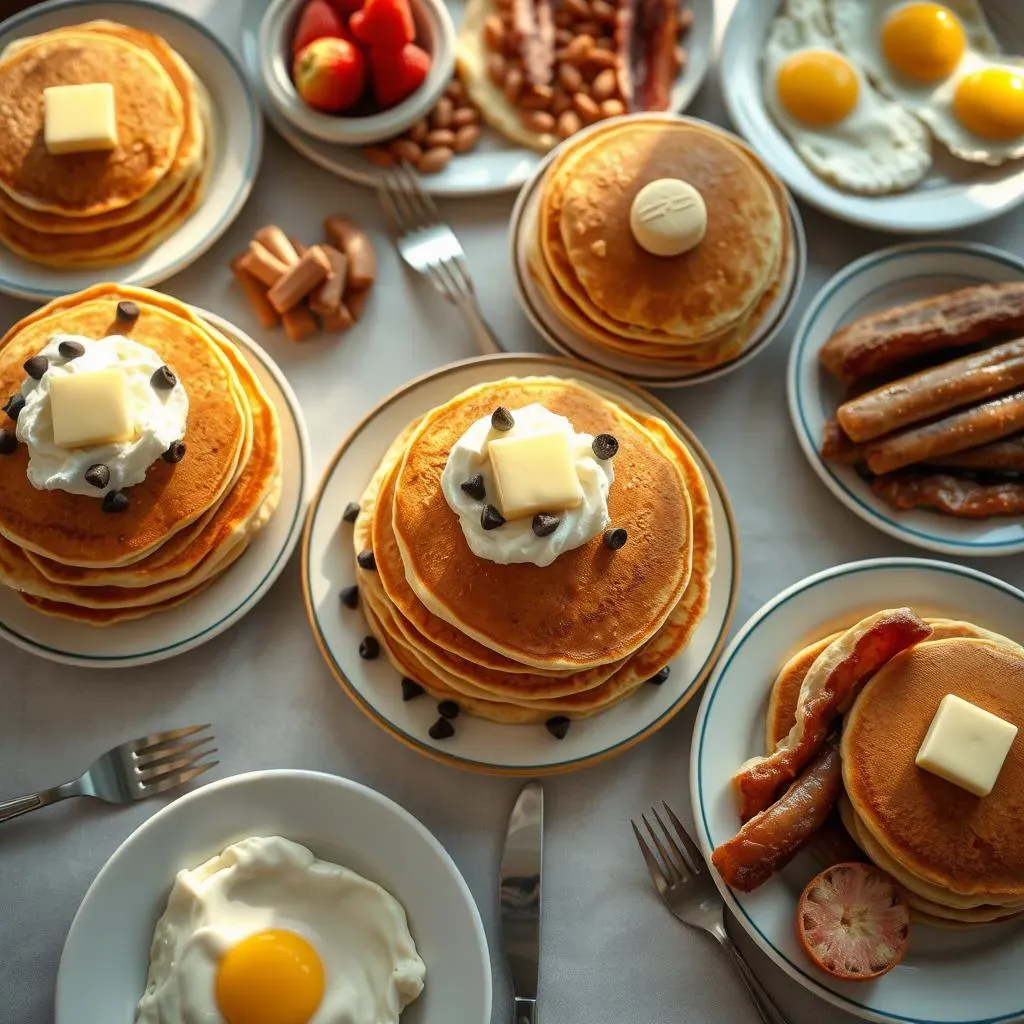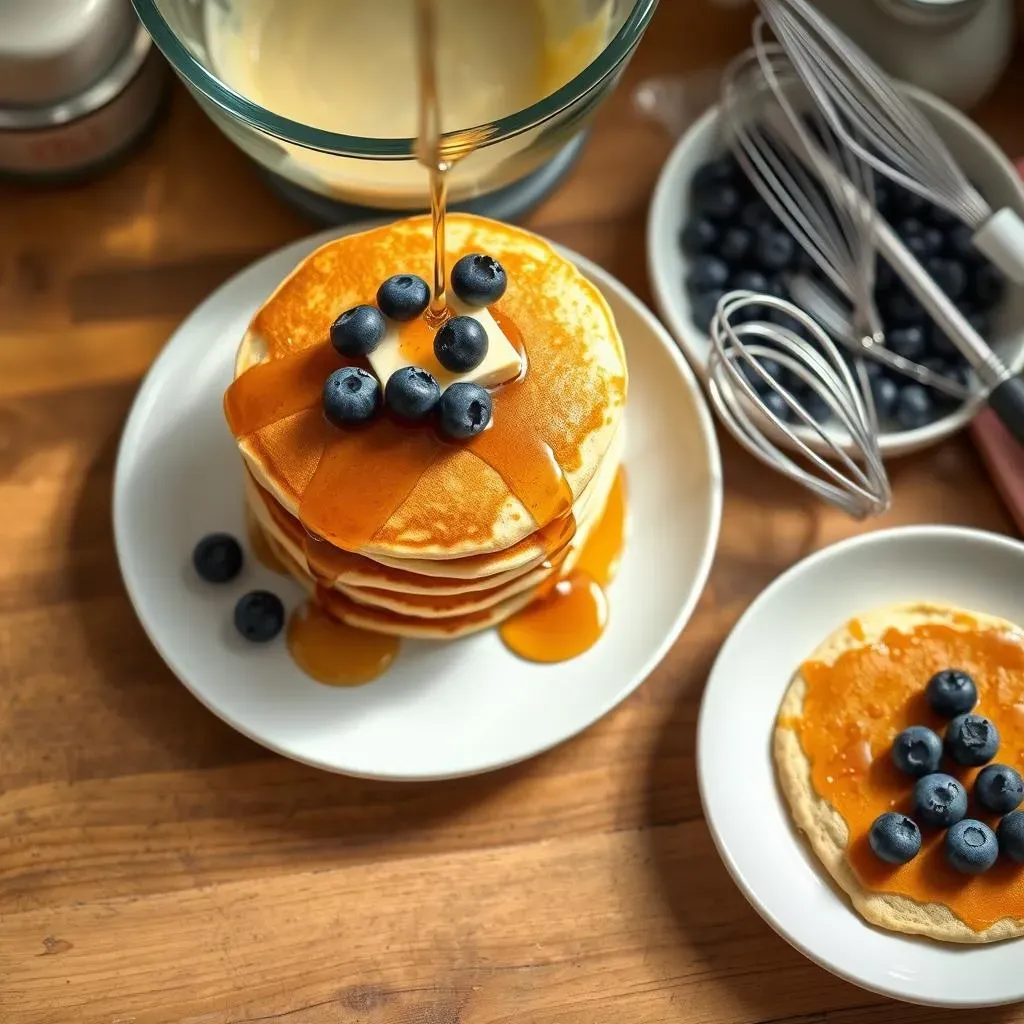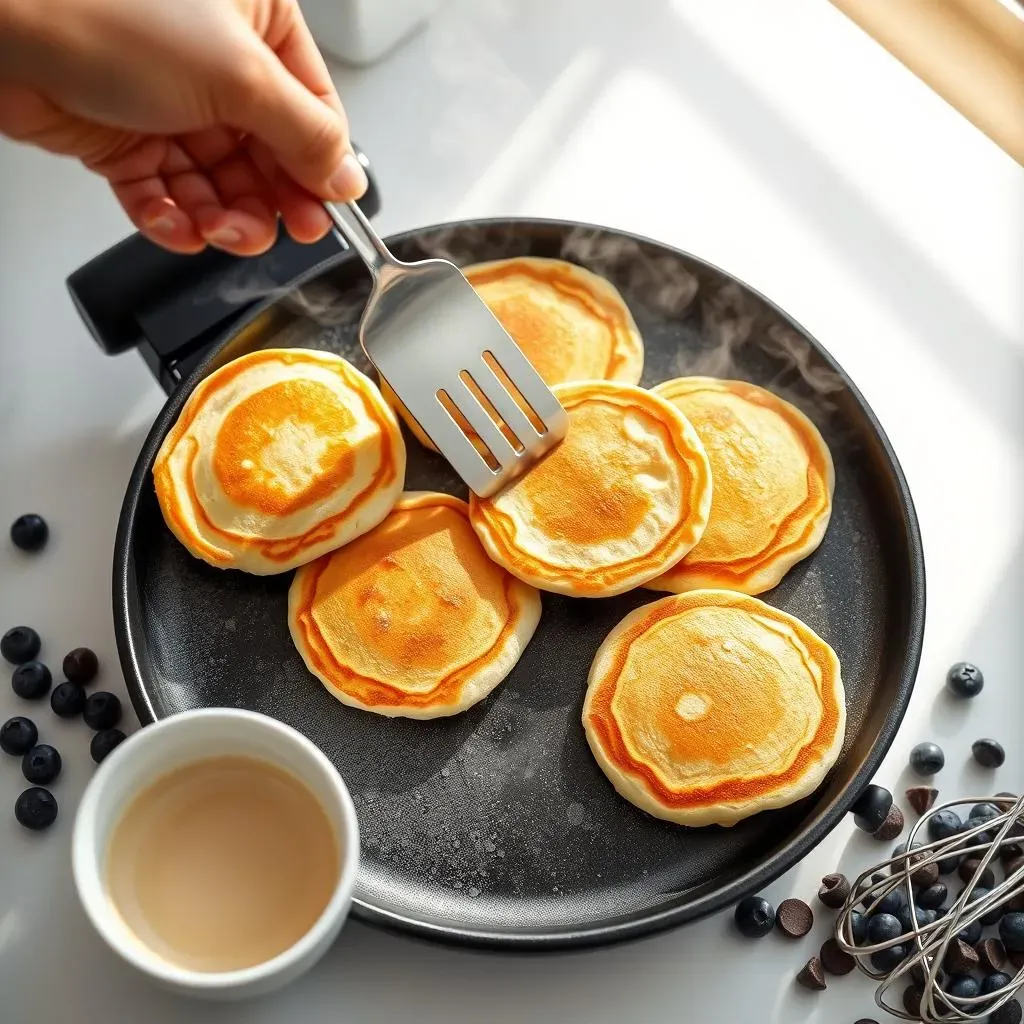Table of Contents
Ever stood in your kitchen, pancake mix in hand, wondering how much to make per person? You are not alone. Getting the right amount of pancake mix per person can be tricky. Make too little, and someone is left wanting more. Make too much, and you're stuck with leftovers or, worse, wasted batter. This article is your ultimate guide to mastering pancake portions. We'll explore the basic calculations, consider factors that influence serving sizes, and even share some easy recipes perfect for one person or a whole crowd. Whether you're cooking for a cozy breakfast in bed or a pancake party, we've got you covered. So, grab your whisk and let's dive into the delicious details of pancake mix per person, ensuring fluffy, golden perfection every time!
Calculating Pancake Mix Per Person: The Basics

Calculating Pancake Mix Per Person: The Basics
Let's break down the basics of calculating pancake mix per person. A good starting point is to check the packaging of your pancake mix. Most brands offer a guideline, usually suggesting about ½ cup of dry mix per serving. This typically yields around 2-3 medium-sized pancakes. However, remember that this is just an estimate. A "serving" can vary greatly depending on appetite. Think of it like this: are you feeding hungry teenagers or offering a light brunch to friends? Adjust accordingly! Also, consider that different mixes might have different consistencies when prepared, influencing the final yield. So, always keep an eye on the batter and adjust with a little more mix or liquid to get that perfect, pourable consistency.
Pancake Mix Portions: Factors to Consider

Pancake Mix Portions: Factors to Consider
Appetite Levels
One of the biggest variables is, of course, appetite! Are you serving growing kids, adults with hearty appetites, or individuals who prefer a lighter meal? A single adult might be satisfied with two medium pancakes, while a teenager could easily devour four or five. Consider who you're feeding and adjust the pancake mix portions accordingly. Don't be afraid to ask if anyone wants seconds; it’s always better to have a little extra than not enough.
Pancake Size and Thickness
The size and thickness of your pancakes also play a significant role in determining how many pancakes each person will eat. Thin, crepe-like pancakes will likely be consumed in larger quantities than thick, fluffy ones. A stack of silver dollar pancakes is different from a single, large pancake covering the entire plate! Think about the overall density and richness of your pancakes when estimating how many to make.
Side Dishes and Toppings
What else are you serving with your pancakes? If you're offering a full breakfast spread with eggs, bacon, sausage, and fruit, people will likely eat fewer pancakes. The same goes for toppings. A simple pat of butter requires fewer pancakes. A mountain of whipped cream, chocolate chips, and syrup? Probably less pancakes are needed. Consider the entire meal and adjust the pancake mix portions to balance the overall serving.
Factor | Impact on Portion Size |
|---|---|
High Appetite | Increase Mix by 50% |
Large Pancake Size | Decrease Mix by 25% |
Heavy Toppings | Decrease Mix by 25% |
Easy Pancake Recipes for One or a Crowd

Easy Pancake Recipes for One or a Crowd
Single-Serving Pancake Bliss
Craving pancakes but don't want to make a whole batch? No problem! For a single serving, mix ¼ cup of pancake mix with 2-3 tablespoons of milk (or your favorite alternative) and a splash of vanilla extract. Whisk until just combined – a few lumps are okay! Heat a lightly oiled griddle or pan over medium heat. Pour the batter onto the hot surface and cook for 2-3 minutes per side, or until golden brown and cooked through. Top with your favorite toppings and enjoy your personal pancake perfection.
Scaling Up for a Crowd
Got a brunch gathering on the horizon? Scaling up your pancake recipe is easy! Just multiply the single-serving recipe by the number of people you're feeding. For example, for four people, you'll need 1 cup of pancake mix and about ½ cup of milk. A large mixing bowl is your best friend here. Remember to whisk well to avoid lumps. Also, preheating your griddle is crucial when cooking for a crowd. Keep the cooked pancakes warm in a preheated oven (around 200°F) until everyone is ready to eat.
Ever made a huge batch of pancakes, only to have them turn out flat and rubbery? It's the worst! The key is not to overmix the batter. Overmixing develops the gluten in the flour, which leads to tough pancakes. Mix until just combined, and don't worry about a few lumps. Trust me, your pancakes will thank you.
Flavor Variations for Every Palate
Pancakes are a blank canvas for flavor! For a touch of sweetness, add a tablespoon of sugar or honey to the batter. For a hint of spice, sprinkle in some cinnamon or nutmeg. Chocolate chips, blueberries, or mashed bananas are also fantastic additions. If you're feeling adventurous, try adding a spoonful of peanut butter or a dash of almond extract. The possibilities are endless! Get creative and experiment with different flavor combinations to find your signature pancake recipe.
My personal favorite? A dash of cardamom and a sprinkle of lemon zest. It adds a touch of warmth and brightness that's simply irresistible.
Tips for Delicious Pancakes Using Pancake Mix

Tips for Delicious Pancakes Using Pancake Mix
Don't Overmix: The Golden Rule
Seriously, this is the most important tip. Overmixing develops the gluten in the flour, resulting in tough, flat pancakes. Mix the wet and dry ingredients until just combined. A few lumps are perfectly fine – they'll disappear during cooking. Think of it like gently folding in the ingredients rather than vigorously beating them. This simple step will make a world of difference in the texture of your pancakes.
I learned this the hard way. For years, I made dense, hockey-puck-like pancakes. Then, a wise old diner cook told me the secret: "Treat the batter gently, kid." Changed my pancake game forever.
Temperature is Key
The temperature of your griddle or pan is crucial for achieving that golden-brown perfection. If the surface is too cold, your pancakes will be pale and soggy. If it's too hot, they'll burn on the outside and be raw on the inside. Aim for medium heat. A good way to test the temperature is to flick a few drops of water onto the surface. If they sizzle and evaporate quickly, it's ready to go. If they just sit there, give it a bit longer. Also, use a non-stick griddle or lightly grease your pan with butter or oil to prevent sticking.
Here’s a quick guide to help you get it right:
Temperature | Pancake Result |
|---|---|
Too Cold | Pale, Soggy |
Too Hot | Burnt Outside, Raw Inside |
Medium Heat | Golden Brown, Fluffy |
Elevate with Extras
Pancake mix is a great base, but don't be afraid to jazz it up! Add a splash of vanilla extract, a pinch of cinnamon, or a spoonful of melted butter to the batter for extra flavor. Fresh berries, chocolate chips, or chopped nuts are also fantastic additions. Get creative with your toppings, too! Think beyond syrup – try whipped cream, Nutella, fruit compote, or even a savory topping like fried chicken and hot sauce. The sky's the limit!
“The only limit to your impact is your imagination and commitment.” – Tony Robbins
Conclusion: Pancake Perfection, Portion Controlled
Mastering the art of pancake mix per person doesn't have to be a guessing game. By understanding the basics, considering individual appetites, and utilizing simple recipes, you can whip up the perfect amount every time. Whether it's a solo breakfast or a family feast, these tips will ensure everyone enjoys fluffy, golden pancakes without waste. So go ahead, experiment with flavors, toppings, and techniques, and make every pancake experience a delicious success!